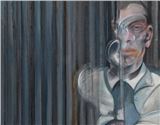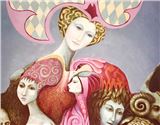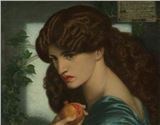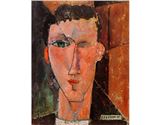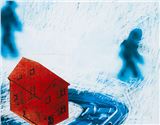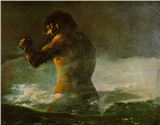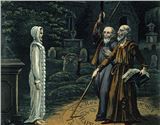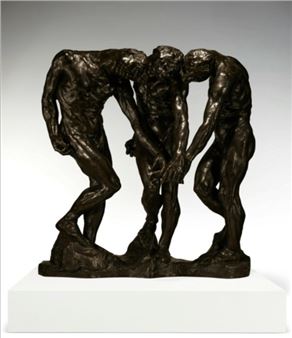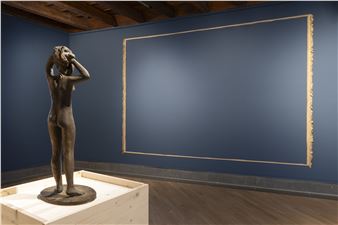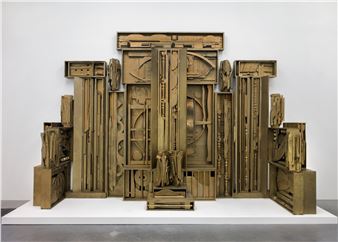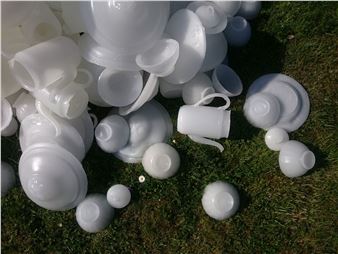Between Two Horizons. French and german avant-gardes from the Saarlandmuseum
At the end of the Franco-Prussian War in 1871, the French defeat leads to the birth of the German nation and the proclamation of William II as Emperor. The place chosen for the ceremony is a snook to France: the Galerie des Glaces in Versailles. It sets the tone: nationalism and fights prevail on both sides of the Rhine, and, for decades, the aesthetic field is no exception.
If we consider that the international collections of museums are the mirror of a countryвҖҷs diplomatic relations, the German avant-gardes of the early twentieth century are actually often underrepresented or nearly absent from the French collections. For some politicians, intellectuals and even artists, itвҖҷs precisely in their ideological opposition that the two neighboring cultures define themselves in the late 19th century and in the beginning of the 20th century. Yet, although the politic and cultural environment is hostile to a transfer of ideas between the French and German intelligentsia, free minds вҖ“ artists such as Max Liebermann, August Macke, Vassily Kandinsky, Max Ernst ou Willi Baumeister; historians like Hugo von Tschudi, Julius Meier-Graefe et Carl Einstein; collectors, following the exemple of the Bernsteins or the visionary Karl Ernst Osthaus; publishers and art dealers as the cousins Bruno and Paul Cassirer or the great Herwarth Walden вҖ“ share a fascinated look towards France and dare becoming purveyors of ideas and enhancers of the replenishment of art in the young German nation.
The exhibition Between Two Horizons tells this enthralling and complex story through a collection that serves perfectly the purpose: that of the SaarlandmuseumвҖҷs Moderne Galerie (SaarbrГјcken). The chronological layout, that brings together 240 paintings, sculptures, prints and photographs, is completed by an extensive documentation вҖ“ coming mainly from the BibliothГЁque Kandinsky вҖ“ to explain the historical context.
Rich in masterpieces of the avant-gardes from both sides of the Rhine, the SaarlandmuseumвҖҷs collection reflects the alternations of the territory where it was born, and invites the audience to discover or rediscover more than one century of a shared history. Within the Saarlandmuseum, impressionist pictures by Auguste Renoir stand alongside Max LibermannвҖҷs, the вҖңfauveвҖқ AndrГ© Derain faces flamboyant paintings and engravings by the expressionists Ernst Ludwig Kirchner and Emil Nolde. The exhibition traces the fertile dialogue between Robert Delaunay and the members of the group Der Blaue Reiter, among which Franz Marc and August Macke, and the friendship of Fernand LГ©ger and Willi Baumeister despite the turmoils of war.
From 1952 onwards, when Saar is placed under the French protectorate as an autonomous state, before returning to the new Federal Republic of Germany, the French lyrical abstraction, namely Roger BissiГЁre and Serge Poliakoff, and the German informal art, enter the collection. After a section dedicated to the Groupe ZERO and the New Realism, the exhibition opens to contemporary art with artists such as Damien Deroubaix and Jonathan Meese.

Recommended for you
At the end of the Franco-Prussian War in 1871, the French defeat leads to the birth of the German nation and the proclamation of William II as Emperor. The place chosen for the ceremony is a snook to France: the Galerie des Glaces in Versailles. It sets the tone: nationalism and fights prevail on both sides of the Rhine, and, for decades, the aesthetic field is no exception.
If we consider that the international collections of museums are the mirror of a countryвҖҷs diplomatic relations, the German avant-gardes of the early twentieth century are actually often underrepresented or nearly absent from the French collections. For some politicians, intellectuals and even artists, itвҖҷs precisely in their ideological opposition that the two neighboring cultures define themselves in the late 19th century and in the beginning of the 20th century. Yet, although the politic and cultural environment is hostile to a transfer of ideas between the French and German intelligentsia, free minds вҖ“ artists such as Max Liebermann, August Macke, Vassily Kandinsky, Max Ernst ou Willi Baumeister; historians like Hugo von Tschudi, Julius Meier-Graefe et Carl Einstein; collectors, following the exemple of the Bernsteins or the visionary Karl Ernst Osthaus; publishers and art dealers as the cousins Bruno and Paul Cassirer or the great Herwarth Walden вҖ“ share a fascinated look towards France and dare becoming purveyors of ideas and enhancers of the replenishment of art in the young German nation.
The exhibition Between Two Horizons tells this enthralling and complex story through a collection that serves perfectly the purpose: that of the SaarlandmuseumвҖҷs Moderne Galerie (SaarbrГјcken). The chronological layout, that brings together 240 paintings, sculptures, prints and photographs, is completed by an extensive documentation вҖ“ coming mainly from the BibliothГЁque Kandinsky вҖ“ to explain the historical context.
Rich in masterpieces of the avant-gardes from both sides of the Rhine, the SaarlandmuseumвҖҷs collection reflects the alternations of the territory where it was born, and invites the audience to discover or rediscover more than one century of a shared history. Within the Saarlandmuseum, impressionist pictures by Auguste Renoir stand alongside Max LibermannвҖҷs, the вҖңfauveвҖқ AndrГ© Derain faces flamboyant paintings and engravings by the expressionists Ernst Ludwig Kirchner and Emil Nolde. The exhibition traces the fertile dialogue between Robert Delaunay and the members of the group Der Blaue Reiter, among which Franz Marc and August Macke, and the friendship of Fernand LГ©ger and Willi Baumeister despite the turmoils of war.
From 1952 onwards, when Saar is placed under the French protectorate as an autonomous state, before returning to the new Federal Republic of Germany, the French lyrical abstraction, namely Roger BissiГЁre and Serge Poliakoff, and the German informal art, enter the collection. After a section dedicated to the Groupe ZERO and the New Realism, the exhibition opens to contemporary art with artists such as Damien Deroubaix and Jonathan Meese.
Contact details


 ARTISTS
ARTISTS
